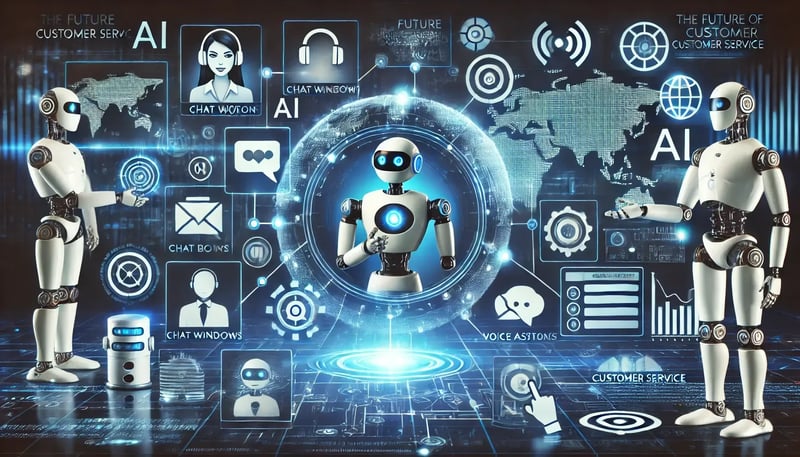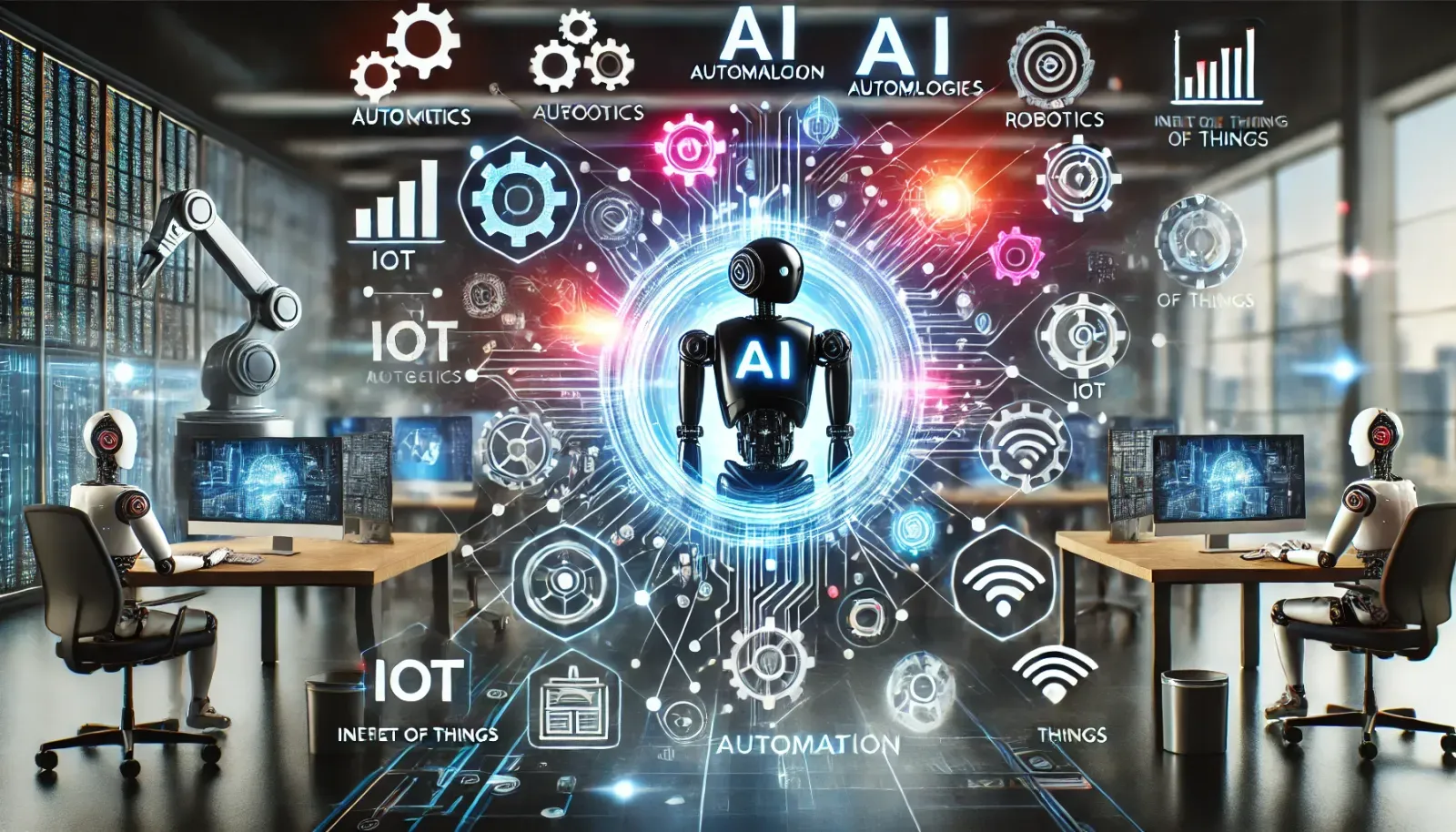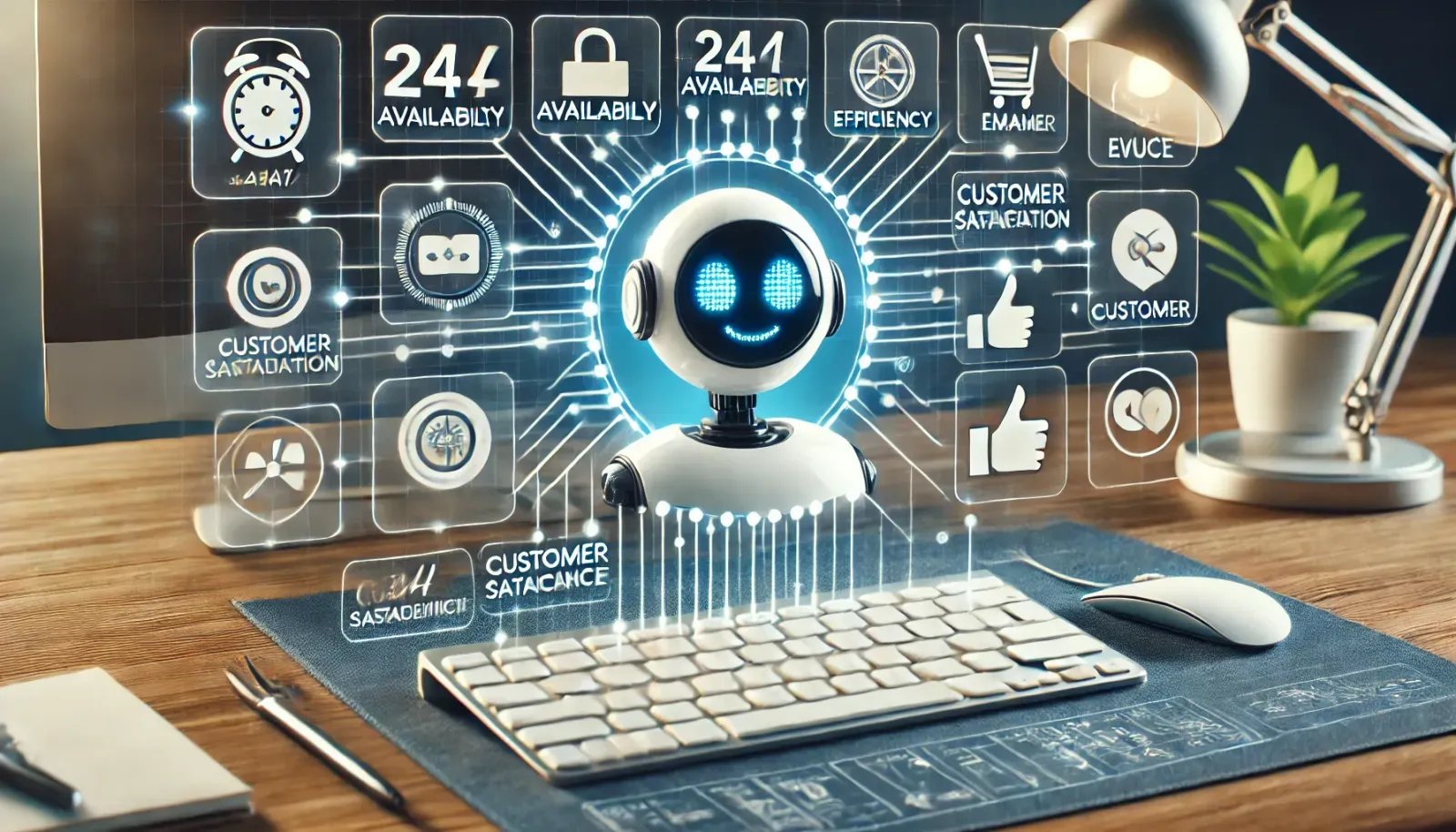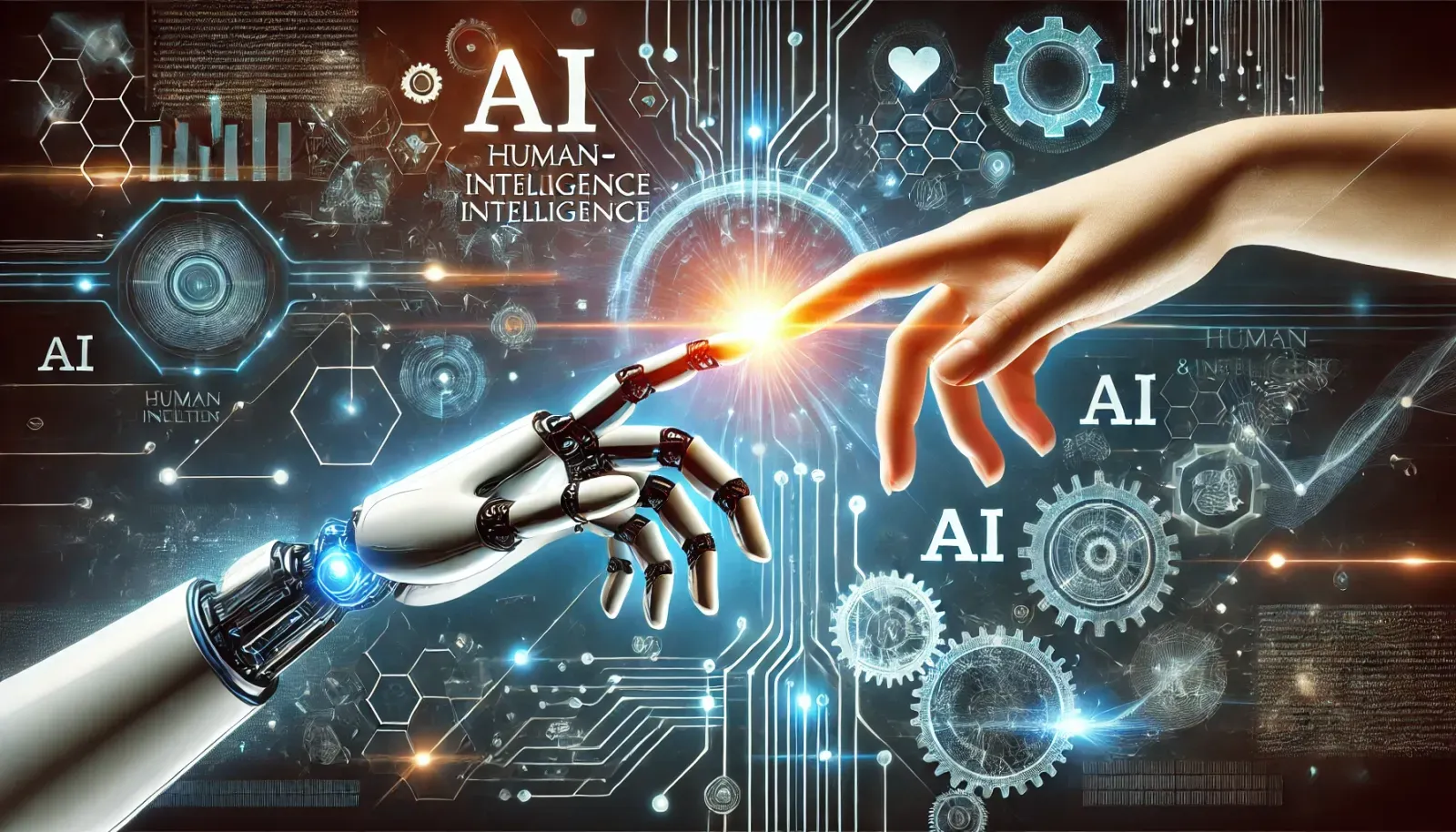AI and the Future of Automated Customer Service

Customer service is undergoing a remarkable transformation, driven by advancements in technology. For small business owners like you, staying ahead of these changes is crucial to keeping your customers satisfied and your business thriving. But with increasing demands and limited resources, how can you ensure your customer service remains top-notch? Enter automated customer service—a game-changing solution that’s transforming how businesses interact with their customers.

Automated customer service leverages advanced technologies like artificial intelligence (AI) and machine learning to deliver faster, more efficient support. Imagine being able to provide 24/7 assistance, personalized responses, and quick resolutions without the need for a large customer service team. This isn't just a trend; it's the future of how businesses will engage with their customers.
By embracing automation, you're not only streamlining your operations but also setting your business up for long-term success. In this article, we'll explore how automated customer service can benefit your business, the key technologies driving this shift, and what the future holds for this rapidly growing field. Whether you're just starting or looking to scale, understanding the power of automation is essential for staying competitive in today's market.
The Rise of Automated Customer Service
Over the years, customer service has shifted dramatically. Traditionally, businesses relied heavily on human interactions—whether it was answering phone calls, responding to emails, or assisting customers in person. While these methods have their strengths, they can be time-consuming, expensive, and sometimes, inconsistent.
This is where automated customer service comes into play. Automation started with simple tools like Interactive Voice Response (IVR) systems, which you might recognize as those phone menus that guide you to the right department. These early systems were a good start but often left customers frustrated with long wait times and limited options.
Today, automation has evolved significantly. Thanks to advances in artificial intelligence (AI) and machine learning, automated customer service is no longer just about routing calls or providing basic information. It’s about delivering fast, efficient, and personalized experiences that can meet your customers’ needs anytime, anywhere.
For small businesses, this evolution is a game-changer. Imagine being able to handle multiple customer inquiries simultaneously without needing a large support team. Automation allows you to do just that, freeing up your time and resources to focus on growing your business. Plus, with AI-driven tools, you can offer more accurate and relevant responses, improving customer satisfaction and loyalty.
In short, automated customer service is not just a fancy technology—it’s a powerful tool that can help you streamline operations, reduce costs, and deliver better service to your customers. By adopting these solutions, you’re not only keeping up with industry trends but also positioning your business for long-term success.

Key Technologies Driving Automation
To truly appreciate the benefits of automated customer service, it’s important to understand the technologies that make it possible. These innovations are what enable businesses like yours to provide faster, more personalized support, even with limited resources.
1. Artificial Intelligence (AI):
AI is the backbone of modern automated customer service. Unlike basic automation tools, AI has the ability to learn and adapt over time. This means that as it processes more customer interactions, it gets better at understanding and responding to customer needs. For example, AI can analyze customer queries and predict the most likely answers, allowing your business to provide quick and accurate responses. This not only enhances the customer experience but also reduces the workload on your human staff.
2. Natural Language Processing (NLP):
NLP is what allows automated systems to understand and respond to human language in a more natural and conversational way. When your customers type a question into a chatbot or speak to a voice assistant, NLP helps the system interpret their words and intent. This technology has advanced to the point where it can understand slang, regional dialects, and even the emotional tone of a message. For small businesses, this means you can offer a more personalized and human-like experience, even if a real person isn’t available to handle the request.
3. Omni-Channel Integration:
Today’s customers expect seamless service across multiple channels—whether they’re reaching out via phone, email, social media, or live chat. Omni-channel integration is a key aspect of automated customer service that allows you to connect all these channels into a single, unified system. This ensures that no matter where or how a customer contacts you, their experience is consistent and their information is up-to-date. For small businesses, this is a significant advantage, as it allows you to manage customer interactions more efficiently and maintain a high level of service across the board.
By leveraging these technologies, small businesses can offer a level of customer service that was once only available to larger companies with extensive resources. Automated systems powered by AI, NLP, and omni-channel integration can handle routine inquiries, provide instant support, and even predict what your customers need before they ask. This not only saves you time and money but also helps you build stronger relationships with your customers by delivering the kind of service they expect in today’s digital world.

Benefits of Automated Customer Service
Adopting automated customer service solutions can offer numerous benefits that directly impact your business's efficiency and customer satisfaction. Let’s explore how these advantages can help you manage your operations more effectively and keep your customers coming back.
1. Efficiency and Cost-Effectiveness:
One of the most significant advantages of automated customer service is the ability to handle a large volume of customer inquiries without the need for a large team. Automation tools can manage repetitive tasks like answering frequently asked questions, processing orders, or providing account information. This frees up your staff to focus on more complex issues that require a human touch. For small businesses, this means you can operate more efficiently, reducing the need to hire additional staff as your business grows. Additionally, automation reduces the risk of human error, ensuring more consistent and reliable service.
2. 24/7 Availability:
In today’s always-on world, customers expect to be able to reach you whenever they need help—day or night. Automated customer service systems, such as chatbots or AI-driven help desks, can provide instant support around the clock. This ensures that your customers can get answers to their questions or resolve issues at any time, even outside of your regular business hours. Offering 24/7 support can significantly enhance customer satisfaction, as it shows that your business is responsive and attentive to their needs, no matter when they reach out.
3. Personalization:
Gone are the days when automation was seen as impersonal and robotic. Modern automated systems are equipped with AI that can analyze customer data to deliver personalized experiences. For example, by tracking past interactions, purchase history, and preferences, these systems can tailor responses to each customer, making them feel valued and understood. This level of personalization can lead to increased customer loyalty, as people are more likely to return to businesses that recognize and cater to their individual needs.
4. Scalability:
As your business grows, so does the demand on your customer service team. With automated solutions, scaling your customer service operations becomes much easier. You can handle an increasing number of customer interactions without the need for a proportional increase in staff. Whether you’re experiencing seasonal spikes in activity or expanding into new markets, automation allows you to scale up quickly and efficiently, ensuring that your customer service keeps pace with your business growth.
5. Data-Driven Insights:
Automated customer service tools also provide valuable data and insights that can help you improve your overall customer experience. By analyzing trends in customer interactions, such as common issues or frequently asked questions, you can identify areas where your business can improve. This data can inform your decision-making, helping you optimize your products, services, and customer support processes. For small businesses, these insights are invaluable in fine-tuning your operations and staying competitive in the market.
By embracing automated customer service, you’re not just improving your customer support—you’re also creating a more efficient, scalable, and customer-focused business. These benefits can lead to increased customer satisfaction, loyalty, and ultimately, business growth.

Challenges and Limitations
While automated customer service offers numerous benefits, it’s important to recognize that it also comes with its own set of challenges and limitations. Understanding these potential pitfalls will help you make informed decisions about how to integrate automation into your business without compromising the quality of your customer service.
1. Customer Frustration with Impersonal Interactions:
One of the biggest concerns with automated customer service is the risk of frustrating your customers. While automation can handle many tasks efficiently, it can sometimes feel impersonal, especially if the system fails to understand the customer’s needs. For example, a chatbot might not be able to handle complex queries or provide the nuanced support that a human agent could. This can lead to customer dissatisfaction, particularly if they feel they are being given generic or unhelpful responses. To mitigate this, it’s crucial to ensure that your automated systems are well-designed, with clear options to escalate issues to a human representative when needed.
2. Security and Privacy Concerns:
Automated systems often rely on vast amounts of customer data to function effectively. This raises concerns about data privacy and security, especially in an era where cyber threats are increasingly common. As a small business, it’s vital to ensure that any automated customer service tools you use are secure and compliant with data protection regulations. Failing to protect customer data can not only harm your reputation but also lead to legal consequences. Investing in secure automation solutions and being transparent about how you handle customer data can help build trust with your customers.
3. Difficulty Handling Complex Issues:
While automation excels at managing routine tasks, it can struggle with more complex or sensitive customer issues. For example, an automated system might not be able to fully understand a customer’s emotional state or handle a nuanced complaint that requires empathy and discretion. In such cases, relying solely on automation could lead to a poor customer experience. It’s important to strike a balance by having human agents available to handle these more challenging situations. This ensures that your customers receive the appropriate level of care and attention, particularly when dealing with delicate matters.
4. Balancing Automation with Human Interaction:
Finding the right balance between automation and human interaction is crucial for providing a well-rounded customer service experience. While automation can significantly improve efficiency and reduce costs, it’s important not to lose the human touch that customers value. Many customers still prefer speaking to a real person, especially when dealing with complex issues or making important decisions. To address this, consider a hybrid approach where automation handles routine inquiries, while human agents focus on more personalized, high-value interactions. This way, you can benefit from the efficiencies of automation while still maintaining strong, meaningful connections with your customers.
5. Keeping Up with Rapidly Evolving Technology:
The field of automated customer service is rapidly evolving, with new tools and technologies emerging all the time. For small businesses, keeping up with these advancements can be challenging, both in terms of cost and expertise. Investing in the latest technology requires time, resources, and often, a learning curve. It’s important to carefully evaluate which tools are right for your business and ensure that your team is adequately trained to use them effectively. Staying informed about industry trends and seeking out expert advice can help you navigate these changes and make the most of automation without overwhelming your business.
By being aware of these challenges and limitations, you can better prepare your business for the integration of automated customer service. The key is to use automation strategically, complementing it with human support where necessary, and always prioritizing the needs and satisfaction of your customers. This balanced approach will help you leverage the benefits of automation while minimizing potential drawbacks, ultimately leading to a more effective and customer-centric service model.

The Future Outlook
As we look ahead, it’s clear that automated customer service is not just a passing trend—it’s a permanent fixture that will continue to shape how businesses interact with their customers. For small business owners, understanding the future of this technology is essential for staying competitive and meeting evolving customer expectations.
1. Emerging Trends in Automation:
One of the most exciting aspects of automated customer service is its ongoing evolution. New trends are emerging that promise to make automation even more powerful and versatile. For instance, we’re seeing advancements in AI that allow for more sophisticated interactions, such as AI-powered virtual assistants that can handle complex queries with a human-like level of understanding. Additionally, the integration of automation with the Internet of Things (IoT) is on the rise, allowing businesses to provide seamless support across connected devices. Voice-activated assistants like Amazon’s Alexa and Google Assistant are becoming increasingly common, enabling customers to interact with businesses using just their voice. These trends indicate a future where automated customer service becomes even more intuitive, responsive, and integrated into daily life.
2. Human-AI Collaboration:
As automation becomes more advanced, there’s growing potential for collaboration between human agents and AI systems. This hybrid approach combines the strengths of both, creating a more efficient and effective customer service experience. For example, AI can handle initial customer inquiries, gathering information and providing basic solutions, while complex issues are escalated to human agents. This allows your staff to focus on high-value tasks that require empathy, creativity, and critical thinking, while AI manages routine tasks and data analysis. By working together, humans and AI can deliver a more comprehensive and satisfying customer experience, ensuring that your business can handle a wide range of customer needs.
3. The Long-Term Impact on Customer Service:
The rise of automated customer service is likely to have a profound long-term impact on the industry. For one, it could lead to significant changes in the job market, with a shift towards roles that require advanced technical skills and the ability to work alongside AI. While automation may reduce the need for certain customer service positions, it also creates opportunities for new roles focused on managing and optimizing these systems. Additionally, customer expectations are likely to evolve as they become more accustomed to instant, personalized support. Businesses that fail to adopt automation may struggle to keep up, while those that embrace it will have a competitive edge in delivering exceptional customer experiences.
4. Preparing for the Future:
To ensure your business is ready for the future of customer service, it’s important to start integrating automation now. Begin by assessing your current customer service processes and identifying areas where automation could make the most impact. Consider investing in AI-driven tools that can help you streamline operations, enhance personalization, and provide 24/7 support. It’s also crucial to keep an eye on emerging technologies and trends, so you can adapt your strategy as needed. By staying ahead of the curve, you’ll be better positioned to meet your customers’ needs and expectations as automation continues to advance.
5. Balancing Technology with a Human Touch:
While the future of customer service is undoubtedly tied to automation, it’s essential to remember the importance of maintaining a human touch. Customers still value personal connections and the reassurance that comes from speaking to a real person, especially when dealing with complex or sensitive issues. As you incorporate automation into your business, make sure to strike a balance by offering both automated and human support. This hybrid approach will help you deliver a well-rounded customer experience that leverages the efficiency of technology while preserving the personal interactions that build trust and loyalty.
In conclusion, the future of automated customer service holds great promise for businesses of all sizes. By embracing emerging technologies, fostering collaboration between humans and AI, and maintaining a focus on customer satisfaction, you can position your business for success in this rapidly changing landscape. Automation is not just about keeping up with the times—it’s about leading the way in delivering exceptional, future-proof customer service.
Summary
Automated customer service is rapidly becoming a cornerstone of modern business operations, offering small businesses like yours a powerful tool to enhance efficiency, reduce costs, and improve customer satisfaction. By leveraging key technologies such as AI, natural language processing, and omni-channel integration, automation can help you provide faster, more personalized support while freeing up valuable resources.
However, it’s important to approach automation with a clear understanding of its challenges and limitations. Balancing automated systems with human interaction, ensuring data security, and keeping up with evolving technologies are all crucial for maintaining a high level of customer service. As the industry continues to evolve, emerging trends like human-AI collaboration and voice-activated assistants will further shape the future of customer service, offering even more opportunities for businesses to innovate and grow.
By staying informed and strategically integrating automated solutions into your operations, you can not only meet the expectations of today’s customers but also prepare your business for the future. Automation is not just a tool for efficiency; it’s a pathway to delivering exceptional customer experiences that set your business apart in a competitive market. As you embrace this technology, remember to keep the human touch at the heart of your customer service strategy, ensuring that your customers feel valued and supported every step of the way.
"Joining this community has been a game-changer for staying updated on the latest trends & events!" - John B.





